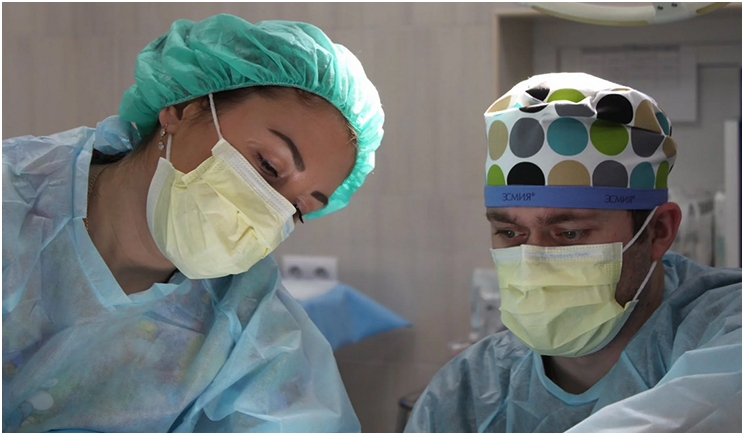
It seems like every few years, a new coronavirus pops up and causes some media attention. Such was the case with the 2002 Severe Acute Respiratory Syndrome (SARS) Coronavirus and the 2012 Middle East Respiratory Syndrome (MERS) Coronavirus.
According to the Centers for Disease Control and Prevention (CDC), coronaviruses usually come from animal sources such as bats and camels. Sometimes these coronaviruses cross from animals to humans, such as the previously mentioned SARS and MERS viruses, as well as the new 2019 Novel Coronavirus (COVID-19). The COVID-19 seems to be in the news daily and has been discussed by people everywhere. But, and this is a good but, the world of dentistry is very prepared for this treat.
The CDC notes that the dental community has been doing a very good job of protecting our patients via state-of-the-art infection control practices. The use of personal protective equipment (PPE) including masks, gloves, protective eyewear, and gowns has led to better protection for our staff and patients. Our use of disinfectants, up-to-date sterilization practices, dedicated hand washing, and one-time-use disposable materials also have all helped facilitate safe dental visits for our patients. All of these practices have been the backbone of the CDC’s Standard Precautions.
A Look at the Virus
According to the CDC, symptoms of COVID-19 can include fever, cough, and shortness of breath. These symptoms can appear two to 14 days after exposure. The current transmission of COVID-19 seems to be from ill people to those around them. The apparent spread of the virus is by respiratory droplets produced by sick people when they cough or sneeze.
It is interesting to note that the timing of this outbreak matches the seasonal flu, which can also present with the same symptoms and be a confounder in proper diagnosis. Fortunately, the properly performed Standard Precautions are effective against such viruses. Three keys can help clinicians preliminarily differentiate whether a patient has COVID-19 and not the flu:
- A history of travel from Wuhan City, China, in the last 14 days before symptom onset.
- Close contact with a person who is under investigation for COVID-19 while that person was ill in the last 14 days before symptom onset.
- Close contact with an ill laboratory-confirmed COVID-19 patient in the last 14 days.
So what can dental practitioners do to protect themselves, their staffs, and their patients from COVID-19? The CDC has recommendations for the general public, such as:
- Wash your hands often with soap and water for at least 20 seconds. Use an alcohol-based hand sanitizer that contains at least 60% alcohol if soap and water are not available. (These recommendations already are part of our Standard Precautions.)
- Avoid touching your eyes, nose, and mouth with unwashed hands.
- Avoid close contact with people who are sick.
- Stay home when you are sick.
- Cover your cough or sneeze with a tissue, throw the tissue in the trash, and then wash your hands.
- Clean and disinfect frequently touched objects and surfaces.
In Your Practice
As to our practice of dentistry, there are three very important points.
First and foremost, it is very important that you discuss the current outbreak with your staff and develop a consistent message that the patient’s wellbeing in the practice is the practice’s number one consideration and that the use of standard precautions keeps everyone safe. You can also find resources from the Organization for Safety, Asepsis, and Prevention (OSAP) online.
Second, review your Standard Precautions guidelines with your staff and make sure that they are being followed.
Finally, let your patients know that you are practicing these precautions as a routine part of your practice and that your precautions are in compliance with CDC guidelines.
While we know that our oral health practices are safe for our patients and staff, the ongoing news about the virus can make people nervous and withdrawn. We must be proactive in offering calming information and reassurance to our staff and patients that our infection control and standard precautions are an excellent deterrent to the virus. We also must remember that many people, including our patients and some of our staff, may receive conflicting information or lack even basic information.
I also strongly recommend that dental practitioners stay current on the virus by visiting the CDC website for the most up to date information. Also, follow the CDC’s Health Alert Network (HAN), which provides interested healthcare providers with up to date information on various health issues that may affect our practices.
By staying proactive, informed, and calm, we will be able to provide our patients and staff with the fantastic dental care we have always provided.
Dr. Williams is a national spokesperson with the Academy of General Dentistry (AGD) and an associate professor at the Midwestern University College of Dental Medicine in Illinois. He is a graduate of the University of Tennessee College of Dentistry and a 30-year veteran of the United States Navy Dental Corps. During his service with the Navy, he was the Public Health Emergency Officer (PHEO) for Navy Region Midwest/FEMA Region 5.
Related Articles
How Do You Treat a Patient With HIV? The Same as Everyone Else
Ensure Best Practices for Infection Control in Your Dental Office
Every Practice Needs an Infection Control Coordinator











